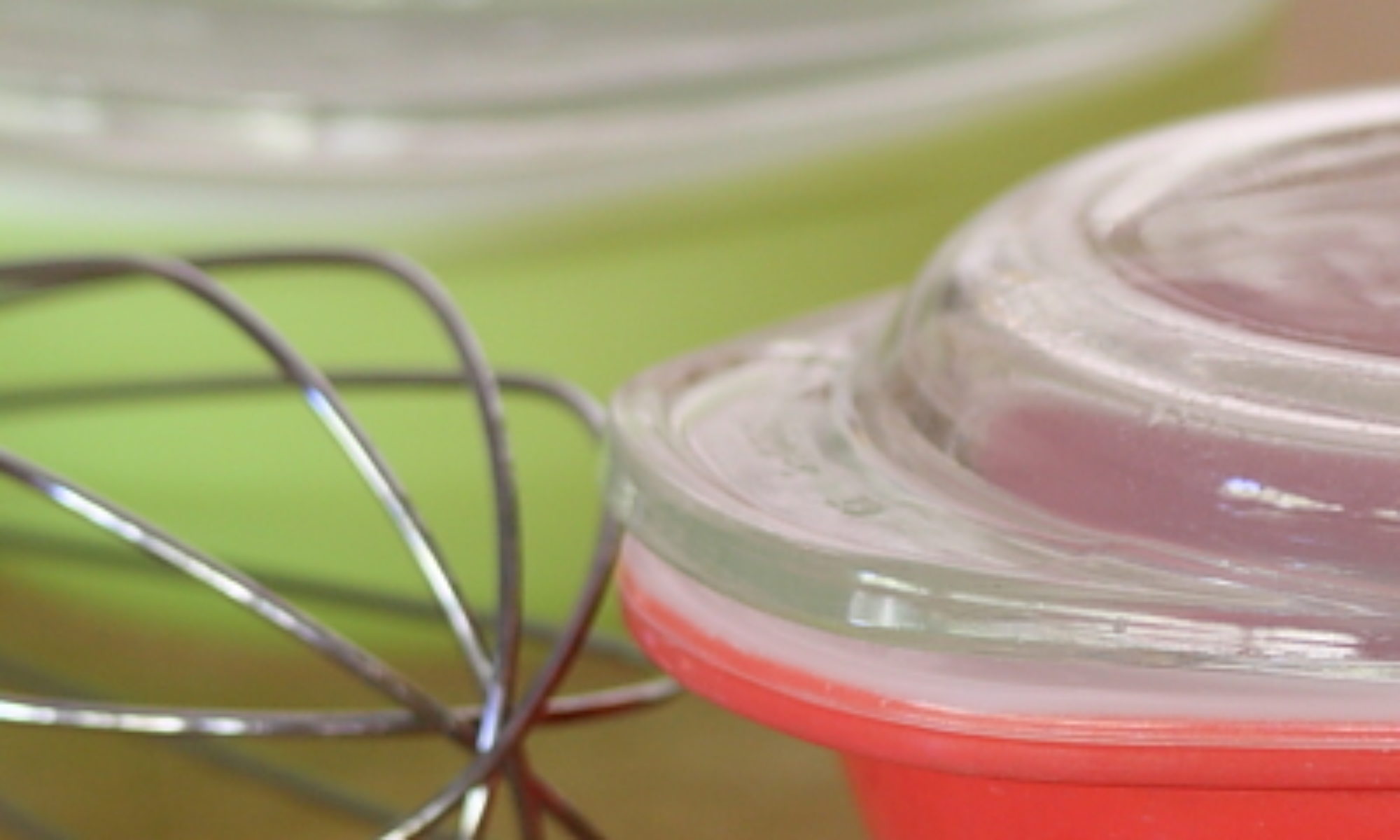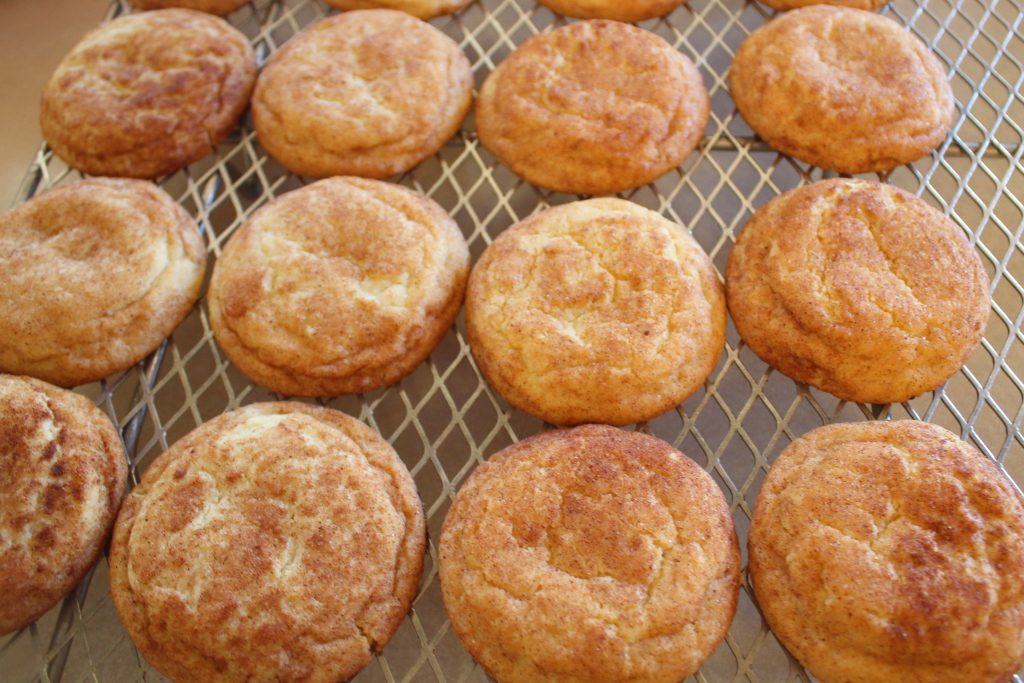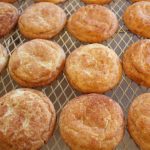
Near the end of the month, we put together something for a coffee/social hour at church. It varies in terms of complexity, but, lately, we’ve been tending toward cookies. Not so much because they’re really easy to make, but because they’re easy to serve, easy to handle when you’re standing, and not very messy. All good things. But, we do try to vary the type of cookies from month to month, so, this month, we thought we’d try snickerdoodles.
I wasn’t sure that I’d ever had snickerdoodles — just at a guess, I’d say yes, but I couldn’t remember eating them. In fact, I wasn’t even sure what flavor they were, and definitely didn’t know how to make them, so we checked in our go-to book for all things that we don’t know about cooking, The Joy of Cooking, but no luck. Then we checked another book, and also looked on the Internet for recipes. We decided to go with a recipe from Two Peas and Their Pod. They claimed these were the best snickerdoodles ever, so we figured we couldn’t go wrong. Wrong! We did go wrong! Why? Because their recipe is incorrect. But, for you, fellow scratcher, we’ve corrected it below, and you can use our recipe with confidence.
Snickerdoodles
Ingredients
For the cookie dough
- 420 g all-purpose flour (3 cups)
- 8 g cream of tartar (2 tsp)
- 6 g baking soda (1 tsp)
- 1/4 tsp kosher salt
- 300 g granulated sugar (1 1/2 cups)
- 230 g unsalted butter, room temperature (2 sticks or 1 cup)
- 2 large eggs
- 8 g pure vanilla extract (1/2 Tbs)
For the cinnamon sugar
- 45 g granulated sugar (3 Tbs)
- 8 g ground cinnamon (1 Tbs)
Instructions
- Preheat oven to 350°F. Line baking sheets with silicone baking mats or parchment.
- In a medium bowl, whisk together flour, cream of tartar, baking soda, and salt. Set aside.
- In the bowl of a stand mixer fitted with the paddle attachment, beat sugar and butter on medium speed until light and fluffy, about 5 minutes.
- Add eggs, one at a time, beating to incorporate completely before adding the next.
- Add vanilla extract and beat in completely.
- Add the flour mixture in two additions, mixing on low until just incorporated, about 15 seconds. Use a rubber spatula to ensure no unmixed flour remains at the bottom of the bowl.
- In a small bowl, mix together sugar and cinnamon.
- If possible, use a small ice cream scoop to portion out 1 1/2 tablespoons of dough and roll in cinnamon sugar mixture. Place on baking sheets leaving 2 inches of space between cookies.
- Bake for about 17 minutes, rotating the sheets from top to bottom and front to back halfway through.
- Let cookies cool on baking sheets for 4 minutes before transferring to a baking rack to cool completely.
Ingredient discussion:
Perhaps the only odd thing in this recipe is the cream of tartar. But that, along with the baking soda, is nothing but a simple baking powder. Nothing more. If you don’t have cream of tartar, we think you can substitute 3 teaspoons of baking powder for the cream of tartar and baking soda. And, of course, use real vanilla extract; it’s worth it. The other thing we always recommend is to use great eggs; that means eggs that come from hens that are treated well, so look at your farmers’ market for eggs from true pasture-raised hens. You’ll be glad you did. Finally, you’ll note that we give the measurements in grams (but provide volumetric measurements, too), because that’s the way we bake. It’s so much simpler to use weights once you get used to it, and much more accurate, too.
Procedure in detail:
Preheat oven to 350°F. Line baking sheets with silicone baking mats or parchment. We bought a couple of silicone baking mats several years ago and just love them for making cookies. The cookies slide right off, and a quick wipe allows us to reload cookies onto the sheets for the next round of baking.
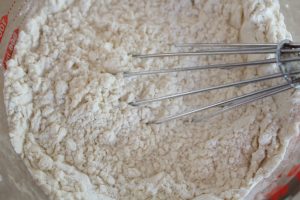
Mix dry ingredients. In a medium bowl, whisk together the flour, cream of tartar, baking soda, and salt. Give it a good whisking to make sure you don’t have lumps of baking soda anywhere, which wouldn’t be very good.
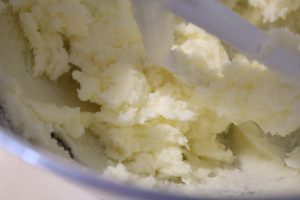
Cream butter and sugar. You can do this two ways. The way we prefer, especially if we’re not sure the butter is warm enough, is to beat the butter separately until smooth and shiny, then add the sugar. If it only takes 30-60 seconds for the butter to become glossy and smooth, the butter is at a prefect temperature. Longer than that and you’d be better off waiting for the butter to warm a little more. When we’re already sure that the butter is warm enough, we just put both the the sugar and butter in the bowl and beat. Either way, beat in a stand mixer fitted with the paddle attachment on medium speed until the mixture is light and fluffy, about 5 minutes.
Add eggs. Crack the eggs into the mix, one at a time, and beat until combined, before adding the next. It might look as if the mixture has broken or curdled, but mix away; it’ll look just fine in a minute.
Add vanilla extract. Pour in the vanilla extract and beat until combined.
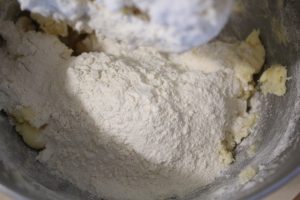
Mix in the dry ingredients. Add the flour mixture in two additions and mix on low until just combined. Use a rubber spatula to scrape the bottom of the bowl where unmixed dry ingredient like to hide. We use two additions because we think that the dry ingredients mix in better and more uniformly. But, more importantly, it’s easier to keep flour from spewing out of the mixer when it’s turned on.
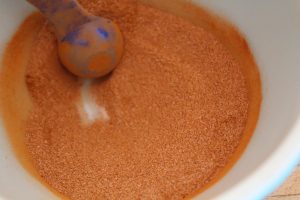
Make cinnamon sugar. Yep, just like the cinnamon sugar you might put on toast. Simply stir together the sugar and cinnamon in a small bowl.
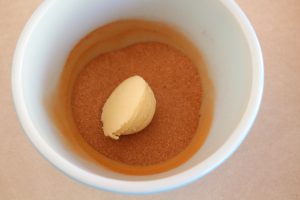
Portion dough and coat. We used to portion cookie dough with a regular tablespoon, but no longer. Somewhere along the line, we found one of those ice cream scoops with the ratcheting handle that perfectly portions out 1 1/2 tablespoons of dough. It makes portioning cookies a breeze, and we recommend using it if you have one. Otherwise, use a regular spoon and scoop out about 1 1/2 tablespoons of dough, round it as necessary, and drop it into the cinnamon sugar. Roll to coat, then place on the prepared baking sheets, leaving 2 inches of space between cookies.
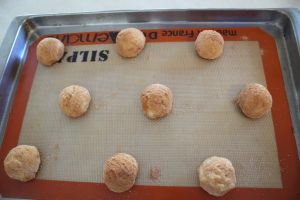
Bake. Here’s the thing: you need to bake these cookies long enough that they puff up, and then collapse and flatten, which takes about 17 minutes total. However, we recommend that you check them after 15 minutes or so. Also, remember to rotate the baking sheets from top to bottom and front to back halfway through.
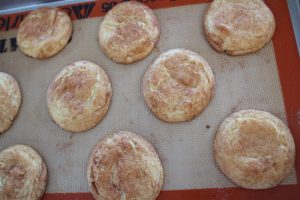
Cool. Let the cookies cool on the baking sheets for about 4 minutes before transferring to a baking rack to cool. Store in an airtight container.
Well, I can see why I couldn’t remember having snickerdoodles, especially if they were based on this recipe. These cookies are just sort of bland and flavorless. In fact, to us, they taste like those sugar cookies made from the chubs of dough — the name rhymes with spillsbury — just without the weird chemical taste. Sort of the white bread of cookies, and, to be honest, we’re not sure that we’d make them again. They’re pretty easy to make, though; you can have a batch in the oven in about 20 minutes, so we’ll say three stars on the “worth it” scale.
